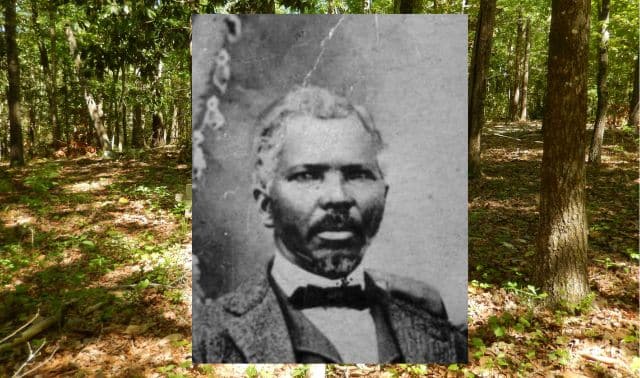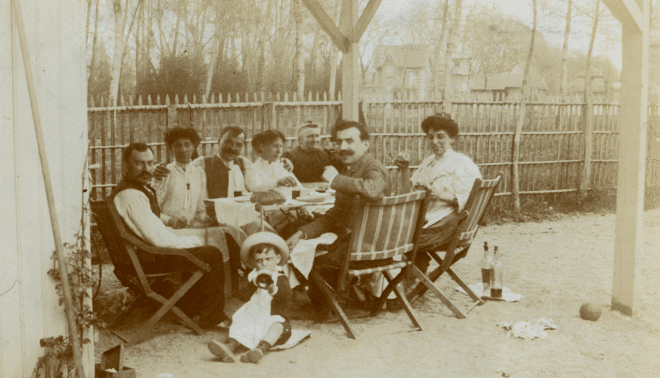
Young or old, new researcher or seasoned veteran: We’re all working with a limited amount of money. To help you pinch pennies, we’ve collected this list of genealogy money-saving techniques to keep your research on budget.
1. Find Free Genealogy Websites
This is probably the most obvious of the tips I’ll share here. But you should take advantage of free resources before requesting records from an archive or consulting subscription or pay-per-view sites. Many of the entries in our annual list of the 101 Best Websites are totally free. Others only require a fee to access special or upgraded features.
FamilySearch is the largest free genealogy website. Backed by the Church of Jesus Christ of Latter-day Saints, this site contains millions of searchable indexes and record images. In fact, the site hosts nearly all microfilm the Church has collected in its decades of research.
Depending on the record, may can maybe also access the Church’s offline records (including books, microfiche and microfilm) for free by visiting the FamilySearch Library in Salt Lake City or your local FamilySearch Center. FamilySearch’s amazing genealogy wiki is another great free resource, full of articles on how to find and use a whole host of genealogy records.
Don’t overlook government-run sites, either. While US citizens are technically paying for them through taxes, resources such as the Library of Congress and the National Archives and Records Administration are free to use and contain thousands of historical documents and photos.
2. Look for Free-Trial Periods and Free Collections
Though subscription sites usually put their records collections behind a paywall, most offer at least some content for free. Search those collections individually or all at once (such as on Ancestry.com).
Sites also entice users by offering free-trial periods, which allow you to test-drive the service before subscribing. Make sure you get the most out of your free trial, which usually lasts between one and four weeks.
Likewise, websites will sometimes open up access to records collections for a few days or for a week at a time. For example, subscription site Fold3 often allows free access to its records in honor of Memorial Day and Veterans Day. In a similar vein, Findmypast and MyHeritage have opened up its marriage records around Valentine’s Day and its Irish records around St. Patrick’s Day. Follow genealogy blogs and websites such as Genealogy Bargains to keep up with the latest deals.
In addition, make sure the records you want to consult on a subscription site aren’t already free. Several frequently cited records collections (such as US federal census records and New York passenger lists) are available on many websites, both free and subscription-based.
Conversely, make sure a subscription site has record collections you’re interested in before you subscribe. The major for-profit sites all allow non-subscribers to view their lists of record collections:
3. Wait for DNA Discounts
DNA tests are probably the single-largest expense in the genealogist’s budget. Even the cheapest DNA tests retail at nearly $100 each—and many researchers want to buy multiple kits.
Fortunately, the testing companies frequently mark down their test prices. Autosomal tests at AncestryDNA and MyHeritage DNA, for example, often drop from $99 to $59 or $69, depending on the sale. Look for deals around Thanksgiving and Christmas, and again around DNA Day (April 25).
Bookmark each testing company’s blog (23andMe, AncestryDNA, Family Tree DNA, MyHeritage DNA) and check in for announcements about discounts, particularly around holidays. Companies also typically offer discounts for attendees at genealogy conferences, so seek out their booths if you find yourself at an event such as RootsTech.
In addition, make sure you have a concrete DNA testing strategy in place so you don’t buy unnecessary tests. No amount of money will solve your research problems if you’re testing the wrong person’s DNA (or testing the person’s wrong kind of DNA).
Do your homework to determine which relative you should test, what kind of test you should order and which company you should order from. DNA expert Shannon Combs Bennett compared the autosomal DNA tests offered by the big companies to determine each test’s strengths and weaknesses.
4. Use Genealogy Software Instead of Online Family Trees
Genealogy websites and their useful online family trees are all the rage, but they come at a cost (literally). You’ll need a monthly or annual subscription to get the most of online family tree services like Ancestry.com and MyHeritage.
Instead of taking on this recurring, indefinite expense, consider investing in a genealogy software program. For a one-time fee (often as low as $30), you can buy desktop family-tree-building software. With that license, you can use the program for as long as you like at no additional cost. Depending on the kind of license and the software, you might even be able to install the program on multiple devices.
Some software programs give you even more options, particularly if you later decide to incorporate online family trees into your research. RootsMagic and Family Tree Maker have syncing capabilities with Ancestry.com family trees, allowing you to easily copy your software-made family trees onto Ancestry.com (and vice versa). Learn more about the pros and cons of using software programs versus online family trees, and why it might benefit your research to primarily use the former.
5. Visit the Library
Books, magazines, movies, CDs, audiobooks, online databases—your local public library has it all for free. Don’t overlook this valuable resource, which can contain a host of useful local genealogy records. Some libraries also have their own subscriptions to genealogy websites, opening up more free research opportunities for you. Check out these five useful tips for researching in a library.
Also consider making a pilgrimage to one of the big genealogy libraries throughout the country. Massive libraries such as the FamilySearch Library (Salt Lake City, Utah), the Allen County Public Library (Fort Wayne, Ind.) and the Library of Congress (Washington, DC) house decades—even centuries—of historical maps, records, gazetteers and photos.
6. Take Advantage of Free Webinars and Videos
Can’t attend genealogy conferences or classes? Fear not! Several organizations offer informational presentations that you can access from the comfort of your smart device. We’ll mention just a few here, but you can view a more complete collection at Cyndi’s List.
FamilySearch’s Learning Center offers hundreds of English-language courses you can view in your browser. Topics range from creating timelines with Microsoft Excel to reading Gothic Scandinavian records to (of course) FamilySearch.org tips.
The similar Ancestry Academy, once a paid service, now offers its library of courses for free. Several videos address how to complete certain tasks on the website (such as updating your password), while others tackle more general research topics.
Legacy Family Tree Webinars hosts multiple live webinars each month, and you can register for free. (You’ll need a paid subscription to view a backlog of recorded webinars.) You can also complete a variety of free online courses through Brigham Young University’s Independent Study program.
In-person conferences will sometimes live-stream their presentations, or host an archive of some of the event’s highlights. RootsTech, the annual genealogy conference hosted by the Church of Jesus Christ of Latter-day Saints, offers select presentations (including keynote speeches from celebrities such as Patricia Heaton and Kristin Chenoweth) on its website for free.
Alternatively, some genealogists have taken to YouTube to share their knowledge. Though cat videos made YouTube famous, the site has evolved into the world’s second-largest search engine, boasting free content on nearly every subject imaginable. We’ve put together some of a list of our favorite YouTube channels.
Or perhaps your library has a subscription to an online education service such as LinkedIn Learning. Previously called Lynda.com, LinkedIn Learning hosts an expansive library of online courses. Most courses are designed for professionals looking to hone business- or trade-related skills. But genealogists will like the service’s courses on writing for publication or working with tools such as WordPress.
Skillshare and The Great Courses/Wondrium offer similar services, each with courses on genealogy, writing and history. Though you’ll have to pay for individual subscriptions, each service offers a free-trial period.
A version of this article appeared in the September 2019 issue of Family Tree Magazine. Last updated February 2025.










